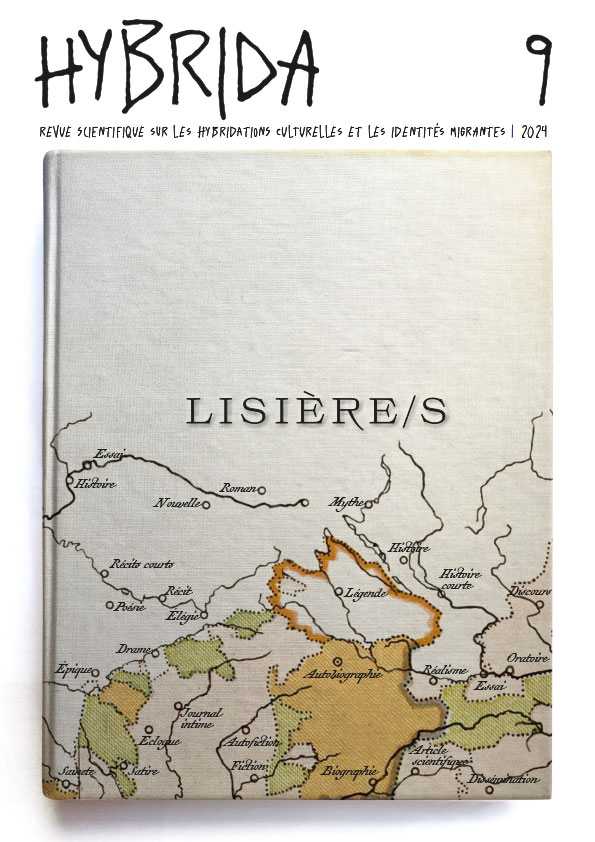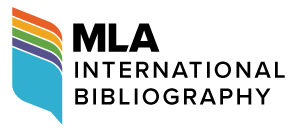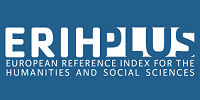Gender and the body in Léonora Miano's 'Crépuscule du tourment': between fiction and friction
DOI:
https://doi.org/10.7203/HYBRIDA.9.29475Keywords:
Léonora Miano, body, gender, sub-Saharan female writing, decolonization Abstract
Abstract
Crépuscule du tourment, by the French-Cameroonian writer Léonora Miano, offers us the opportunity to analyze the female body and gender located in the current problems of African and Afro-descendant women, in a Francophone context. Four voices unravel the bodily f(r)itions of their bodies of memory, bodies of desire, social bodies or maternal bodies. With this textual quartet, Miano celebrates a poetics of the relationship made of contact and permeability to deconstruct the bodily “folds” acquired throug atavism.
 Downloads
Downloads
 References
References
Agier, Michel. (2012). Penser le sujet, observer la frontière. Le décentrement de l’anthropologie. L’homme. Revue française d’anthropologie, (203-204), 51–75. https://doi.org/10.4000/lhomme.23096
Alix, Florian. (2024). Hétérotopies et utopie chez Léonora Miano. Imaginaire du genre entre passé réinventé et anticipation. Alternative francophone. Pour une francophonie en mode mineur, 3(4). https://doi.org/10.29173/af29498
Bard, Christine, Le Nan, Frédérique et Viennot, Éliane. (2019). Dire le genre- Avec les mots, avec le corps. CNRS éditions. https://books.google.es/books?id=foTpEAAAQBAJ&pg=PA7&hl=fr&source=gbs_toc_r&cad=1#v=onepage&q&f=false
Bonniol, Jean-Luc. (2016). Descendant d’esclaves. Dans Luciani, Isabelle et Piétri, Valérie (dirs.), L’incorporation des ancêtres. Généalogie, construction du présent (du Moyen Âge à nos jours) (pp. 223–236). Presses Universitaires de Provence. https://doi.org/10.4000/books.pup.27588
Bouraoui, Nina. (1991). La voyageuse interdite. Gallimard.
Bourdieu, Pierre. (2002). Paris-Bourdieu-Marseille. Documents pour l’enseignement économique et social, (127), 21–31.
Brisson, Luc. (1997). Le sexe incertain : androgynie et hermaphrodisme dans l’Antiquité gréco-romaine. Vérité des Mythes. Les Belles Lettres. Nouvelle édition 2008. [Compte-rendu par Arnaud Paturet]. https://bmcr.brynmawr.edu/2009/2009.04.48/
Deleuze, Gilles. (1988) Le Pli. Minuit.
Di Giorgio, Michela. (1998). Le genre prend corps. Dans Sohn, Anne-Marie et Thelamon, Françoise(dir.), L’histoire sans les femmes est-elle possible ? (pp. 165–172). Éditions Perrin.
Duff, Christiane et Labrosse, Claudia, (dir.). (2015). Corps écrit, corps écrivant : le corps féminin dans les littératures francophones des Amériques. Peter Lang.
El Nemr, Amina. (2019). L’androgyne et l’origine de l’identité de genre. Cahiers de psychologie clinique, 52(1), 79-91. https://doi.org/10.3917/cpc.052.0079
Étoké, Nathalie. (2010). L’écriture du corps féminin dans la littérature de l’Afrique francophone au sud du Sahara. L’Harmattan.
Kempf, Roger. (1968). Sur le corps romanesque. Seuils.
Lakoff, Georges. (1987). Women, Fire and Dangerous Things. What Categories Reveal about the Mind. Chicago University Press.
Laplanche, Jean. (2014). IX. Le genre, le sexe, le sexual. Dans Laplanche, Jean (dir.), Sexual. La sexualité élargie au sens freudien (pp. 153-193). Presses Universitaires de France. https://shs.cairn.info/sexual-la-sexualite-elargie-au-sens-freudien--9782130630302-page-153?lang=fr
Merleau-Ponty, Maurice. (1945). La phénoménologie de la perception. Gallimard.
Miano, Léonora. (2012). Habiter la frontière. L’Arche.
Miano, Léonora. (2016). Crépuscule du tourment 1 : Melancholy. Grasset. Édition numérique.
Miano, Léonora. (2017). Crépuscule du tourment 2 : Héritage. Grasset. Édition numérique.
Miano, Léonora. (2020). Afropea. Utopie post-occidentale et post-raciste. Grasset.
Miano, Léonora. (2021). L’Autre Langue des femmes. Grasset.
Oberhuber, Andrea. (2016). Fictions dominantes, frictions génériques. Dans Andrea Oberhuber, Alexandra Arvisais et Marie-Claude Dugas. (eds.), Fictions modernistes du masculin-féminin (pp. 29–48). Presses universitaires de Rennes. https://doi.org/10.4000/books.pur.55956
Pavard, Bibia et Rennes, Juliette. (2021). Se dénuder en public. Corps, genre et politique. Clio. Femmes, genre, histoire, 2(54), 7–22. https://doi.org/10.4000/clio.20287
Wittig, Monique. (2007). La pensée straight. Editions Amsterdam.
Downloads
Published
How to Cite
-
Abstract102
-
PDF (Français )55
Issue
Section
License
Copyright (c) 2024 Mª Carmen Molina Romero

This work is licensed under a Creative Commons Attribution-NonCommercial-ShareAlike 4.0 International License.
All the documents in the OJS platform are open access and property of their respective authors.
Authors publishing in the journal agree to the following terms:
- Authors keep the rights and guarantee HYBRIDA the right to be the first publication of the document, licensed under a Creative Commons license Attribution-NonCommercial-ShareAlike 4.0 International (CC BY-NC-SA 4.0) that allows others to share the work with an acknowledgement of authorship and publication in the journal.
- Authors are allowed and encouraged to spread their work (once published) through electronic means using personal or institutional websites (institutional open archives, personal websites or professional and academic networks profiles) once the text has been published.

















